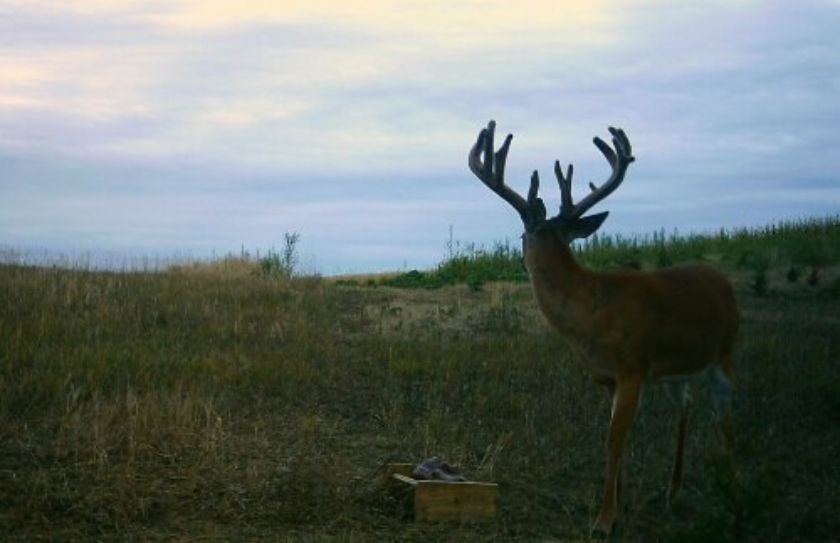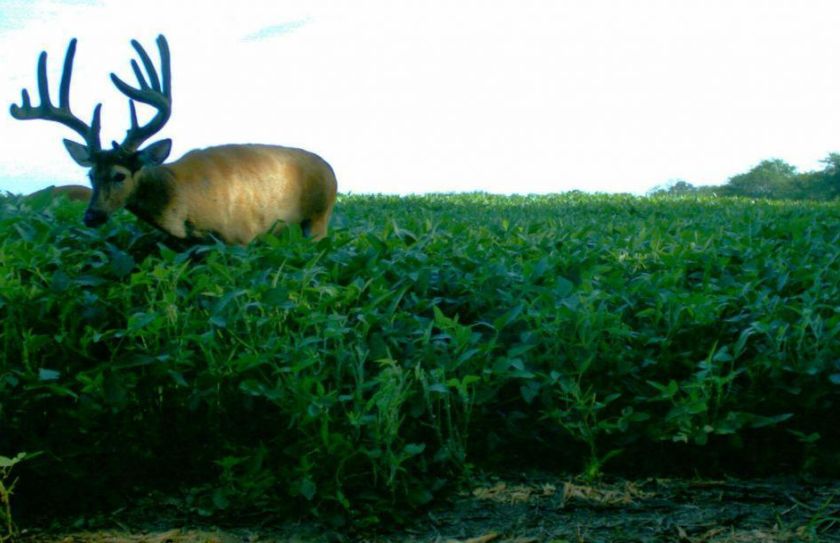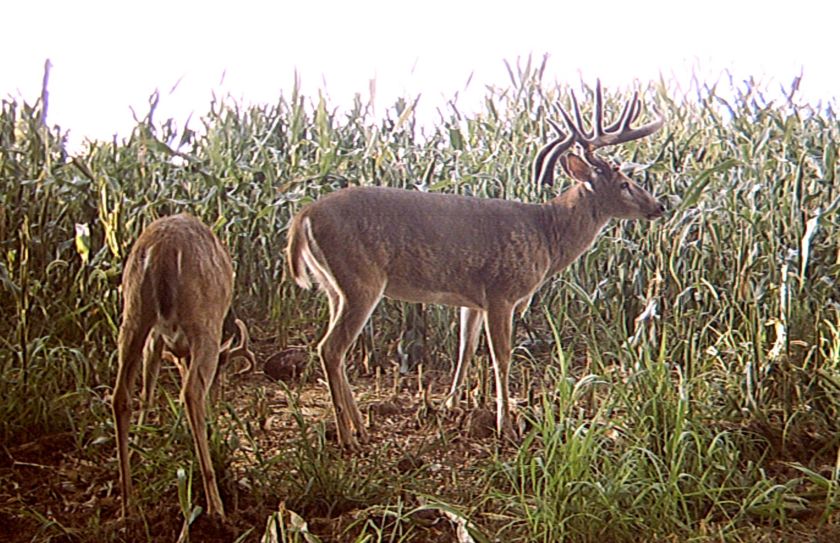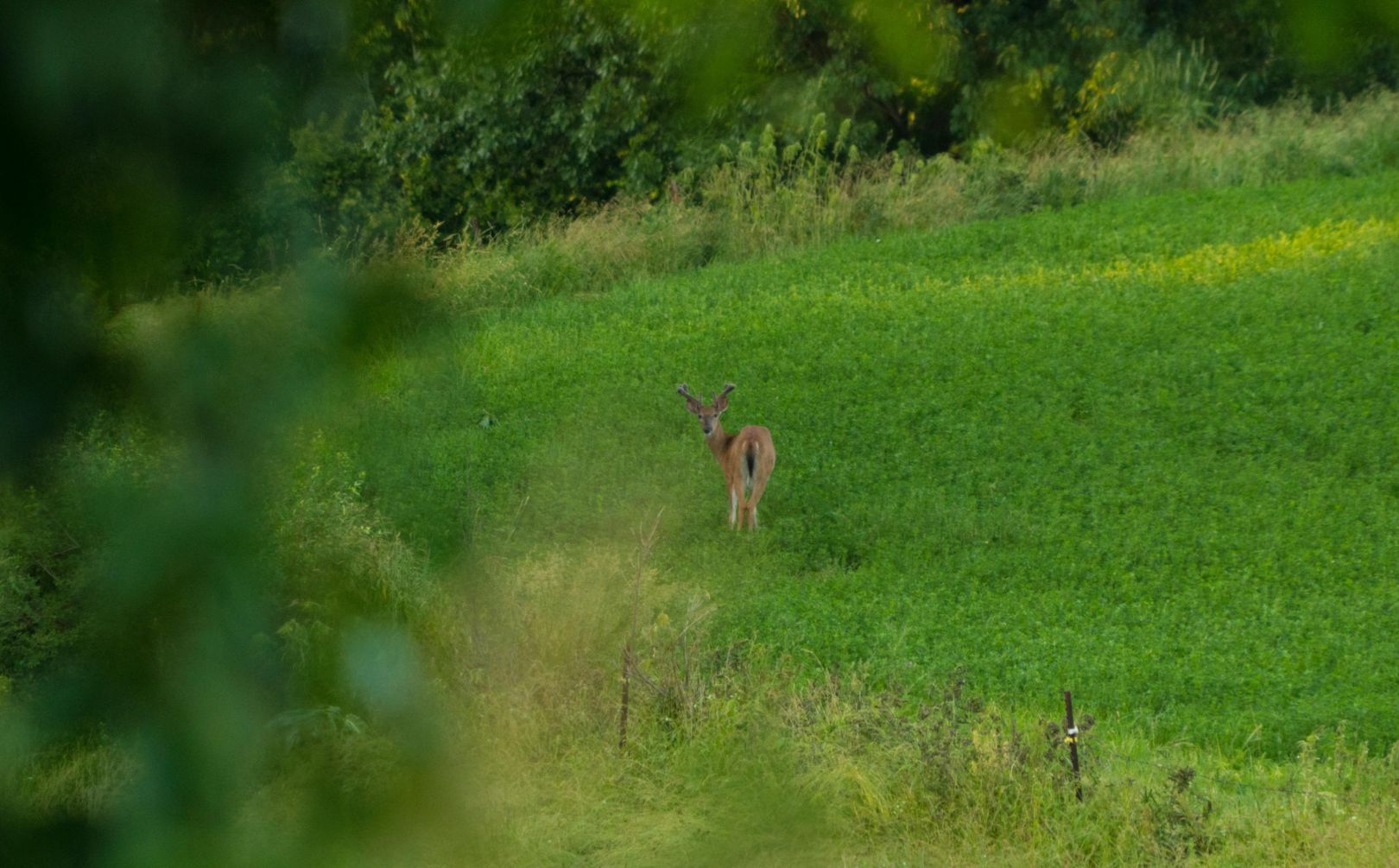
Summer whitetail sightings really get the blood boiling for the upcoming hunting season! Giant velvet monsters together in harmony cruising the hay or bean fields, while the setting sun is throwing her final rays against the majestic backdrop of woodlines, fencerows, and cornfields. It is truly an awesome sight to behold! Night after night you can set your watch by the consistent exodus from woodlot to food source.
Have you ever asked your self, "Why" are those deer, and in particular "Mature Bucks", enjoying that pattern of such rigid and consistent frequency? And at the same time, have you ever wondered where those deer appear to vanish to during the months of hunting season. I have a question I like to convey to my clients, or during seminars and its something along the lines of, "Does it really matter where those deer are living the other 9 months of the year?" Now, its not to say that I don't care about the health or well being of those deer the rest of the year; its just that I have found that the hunting season is the #1 time to focus on for creating and shaping the local deer herd.
There are many reasons a mature buck will choose to live in one location or another, and I have even heard speculation within the scientific community that a buck, when pressured, may actually return to the safety and security of his fawning cover. What I would like to do is to look at, what some of the possible reasons are that a mature buck would choose to live in one location during the summer...and just the opposite during the hunting season.
Summertime Bachelors
1. Big Boys, with big bodies...could use a little shade! The cool canopy and airflow of mature hardwoods are just the ticket for a summer time hangout. Succulent young shoots of hardwood species as well as green leaves can be eaten while sticking pretty close to a single bedding spot all summer long. Keeping cool...while getting fat, goes hand in hand.
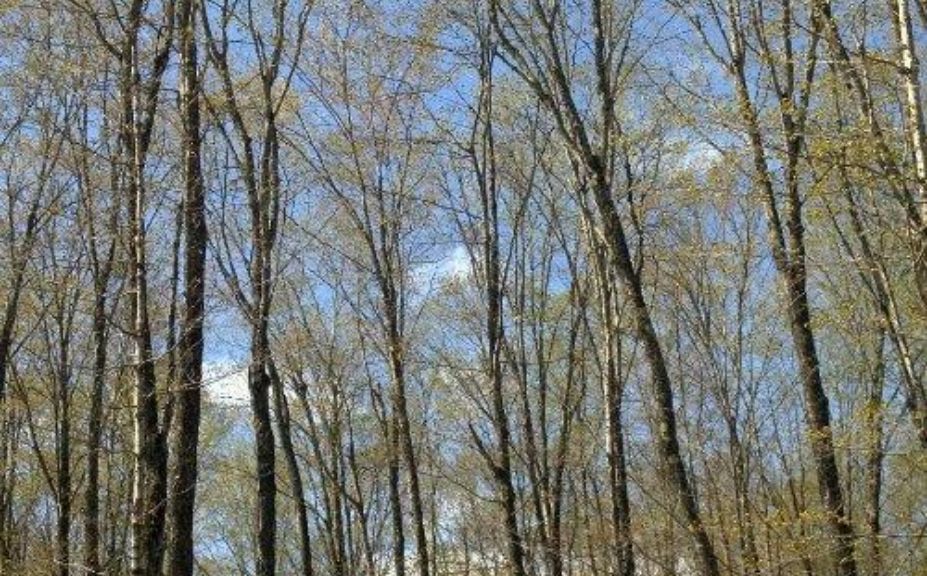
2. Alfalfa, soybeans, clover and the numerous forbs and forages that are available during the summer months are plentiful and in the northern 1/2 of the country it is typical that any whitetail has several times more food available...than it needs. Add an adjacent stand of hardwoods and enough room in other places for doe family groups, and you can experience some outstanding summer game cam photos!
3. Green leaves, zero hunting pressure, and succulent high grasses or weeds equals abundant summer time cover just about anywhere a whitetail turns. And that is why a those summer patterns are so consistent; not only is there great food, there is also un-hunted and unmolested cover to go along with it!
Times are Changing
As the months tick by, there are huge changes in the whitetail woods! Is your whitetail habitat ready for those changes? I can't help but continually think of my buddy Karl's 2010 buck. That buck grew up in incredible summer habitat and was photographed all summer long. Then, 2 miles away we start to get pictures of that buck in late September, and kill him in late October. That 168" 5 year old chose to live in 1 habitat for summer...another for fall. Is your property ready for the upcoming changes?
Hunting Season Hiding Spots
1. When the temperatures begin to fall a whitetail's needs begin to shift as well. A leafless hardwoods provides zero thermal or snow hindrence cover, and at the same time very little protection from the elements. It was at this time when I would notice the bulk of northern MI whitetails shifting their patterns of holding cover from Hardwoods to conifer edges of mixed habitat. Except for evening feeding patterns those same open, mature hardwoods that once held a dozen deer or more, hold few to none.
High stem counts per acre of native grasses, shrubs, hardwood regeneration, and mixed conifer pockets can all be outstanding hunting season holding cover for mature bucks!
2. Soybeans turn brown by mid September, alfalfa stemmy and yellow following the first frost, and clover deminishes in both volume and food value as each day passes. Those tender shoots and bright green leaves are gone, and so is the attraction.
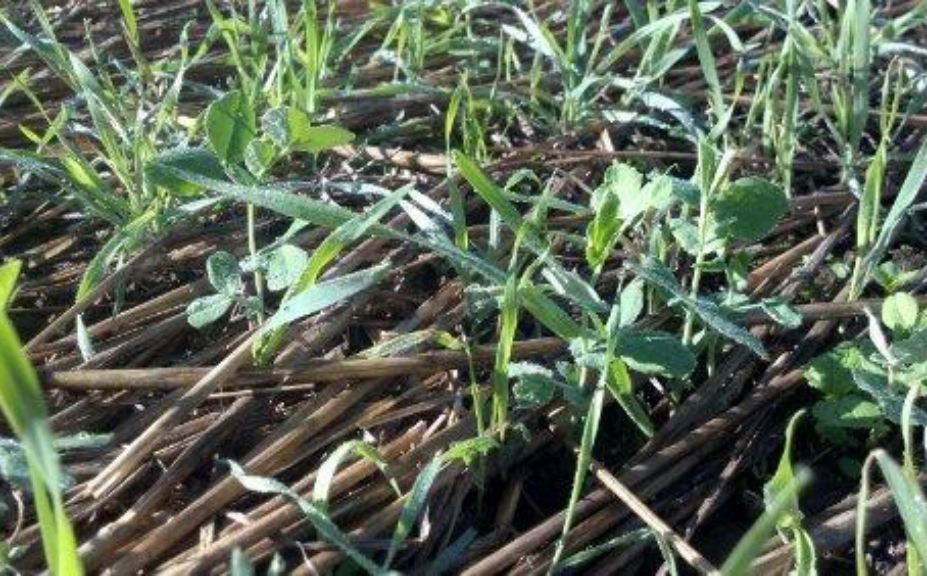
The shift of food type changes greatly in the whitetail woods as the focus turns to the cool season forages of wheat, rye, and oats, corn, brassicas, peas, and even late summer planted soybeans.
3. When the leaves drop, and many weeds and various grasses have crumpled to the ground the amount of cover experiences a quick decline. At the same time a literal army of camo and orange invade the woods! The cover is gone...and the pressure is up! Also, the adjacent food sources and protection from the ever changing elements have disappeared as well. It all equals a very influential pattern of drastic propotions.
Whether you have private land and create it...or hunt public land and find it, the #1 way to experience whitetail success is by recognizing consistent fall food sources and consistant fall cover with the ability to both hide deer and to protect from the elements. But that's not all...even if you have the perfect fall ingredients, those deer have to feel as little influence from you, while you hunt, as possible. Remember that poor habitat is better than pressured habitat almost every time.
Is Your Hunting Land Ready?
Summertime sightings are great to get excited about! But, are the reasons those deer allow you to watch them so consistently all summer long, the exact reasons why those deer won't be there when hunting season arrives? The requirements of the local deer herd as fall approaches is still the same: Food, Cover, and Security. It's worthwhile to take the time to examen your own hunting and habitat situation and to ask yourself, "Is my hunting land ready?"
By Jeff Sturgis
